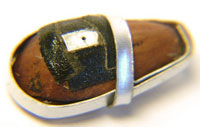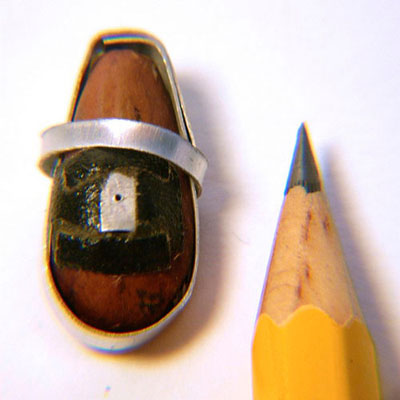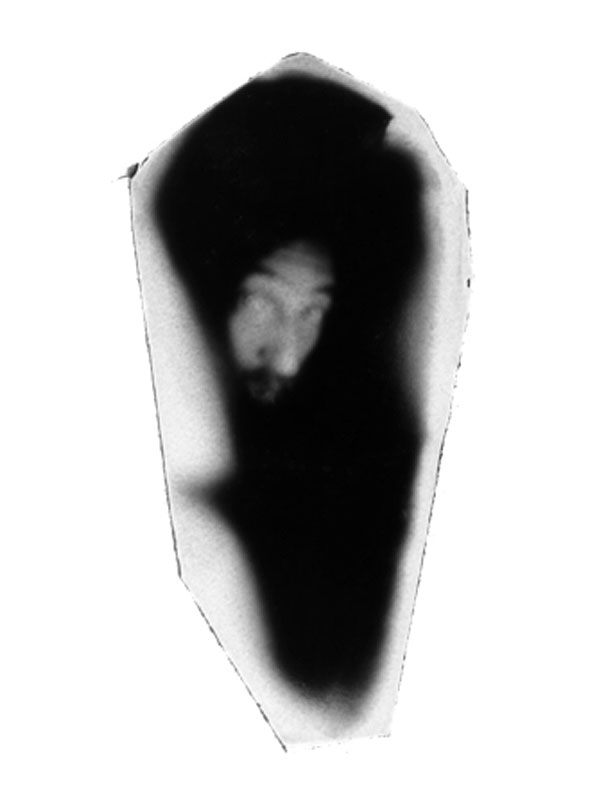Italian Artist Makes Tiny Pinhole Cameras Out of Pine Nuts
posted Tuesday, March 27, 2012 at 12:20 PM EST
 Francesco Capponi is one of those unique people who sees the ordinary and imagines the extraordinary. While studying at the Fine Arts Academy of Perugia (Italy), he fell in love with “stenopeic” photography and wanted to learn as much as he could about it. His photography teacher suggested he search the Internet for information but instead of stenopeic, to use the English term, “pinhole photography.”
Francesco Capponi is one of those unique people who sees the ordinary and imagines the extraordinary. While studying at the Fine Arts Academy of Perugia (Italy), he fell in love with “stenopeic” photography and wanted to learn as much as he could about it. His photography teacher suggested he search the Internet for information but instead of stenopeic, to use the English term, “pinhole photography.”
Immediately, Francesco says he was struck by the word "pinhole."
“It sounded like the Italian word for pine nuts: pignoli," he recalls. "And since that moment the little nut planted itself in my head.”
He adds that in time, the idea “grew in my mind as a challenge to make my very own pine nut pinhole camera.”
Perugia is in the heart of Tuscany, a region of central Italy filled with elegant pine forests. Each fall, when the pine trees are heavy with ripe cones, Tuscans harvest them by whacking the branches with long poles. The fallen cones are collected by children, whose job it is to smash them open and gather the fresh nuts.
Most pignolis are destined to be ground up with fresh basil leaves, garlic, and olive oil, to make pesto, while others will be baked in pastry crusts for pignoli pies. In a world full of pine nuts, it did not take Francesco long to work out his pignoli pinhole cameras.
How to Make a Pine Nut Pinhole Camera
 To construct a pine nut pinhole, Capponi first cuts the pine nuts in half and digs out the fruit, which he eats it. He sets aside the shells and then selecting the best ones, paints their insides black.
To construct a pine nut pinhole, Capponi first cuts the pine nuts in half and digs out the fruit, which he eats it. He sets aside the shells and then selecting the best ones, paints their insides black.
Then he takes a half shell and makes a large hole in it. Over this he mounts a tiny plate with a pinhole. Next, he goes into the darkroom and cuts small pieces of photo paper into the shape of the pine nuts shell and carefully places them into some of the half shells.
Using tiny metal rings he made himself, Francesco straps a pinhole half together with a paper loaded half, and voilà, he has his camera, which he calls a “Pinholo.”
Using his thumb as the shutter, he makes long exposures often using himself as the subject (see below). Returning to the darkroom, Capponi opens the Pinholo and processes the exposed paper negatives. Scanning these, he reverses the tones, turning the negative images into positives that he then prints.
He remembers the excitement he felt when he saw the first Pinholo image and how he yelled out: “Eureka! The portraits are real!”
So Crazy It Just Might Work
Okay, I admit I love crazy things like the Pinholo because some days I feel digital photography and automated cameras have taken some of the magic and fun out of photography. There is no longer the pleasure of watching pictures slowly come to life in a tray of developer or the anticipation of opening a box of slides, just back from the lab.
Film photography was full of dangers and pitfalls and was always a gamble. Digital photography is different; automation is all about eliminating the unexpected and getting every image perfectly focused and exposed every time. The surprises are fewer and farther apart.
I admire the work of inventive and curious artists, like Francesco Capponi. After the success of the Pinholo, Francesco moved on, creating other fascinating foodstuff cameras, like the eggshell pinhole.
It is the discovery of remarkable and strange devices that drives him and his excitement is palpable when he urges everyone to: “Please, don’t forget to pinhole the world, pinhole anything, pinhole everything that you see.”
You can see more of Capponi's images at www.francescocapponi.it
Learn to make his eggshell pinhole camera here.
